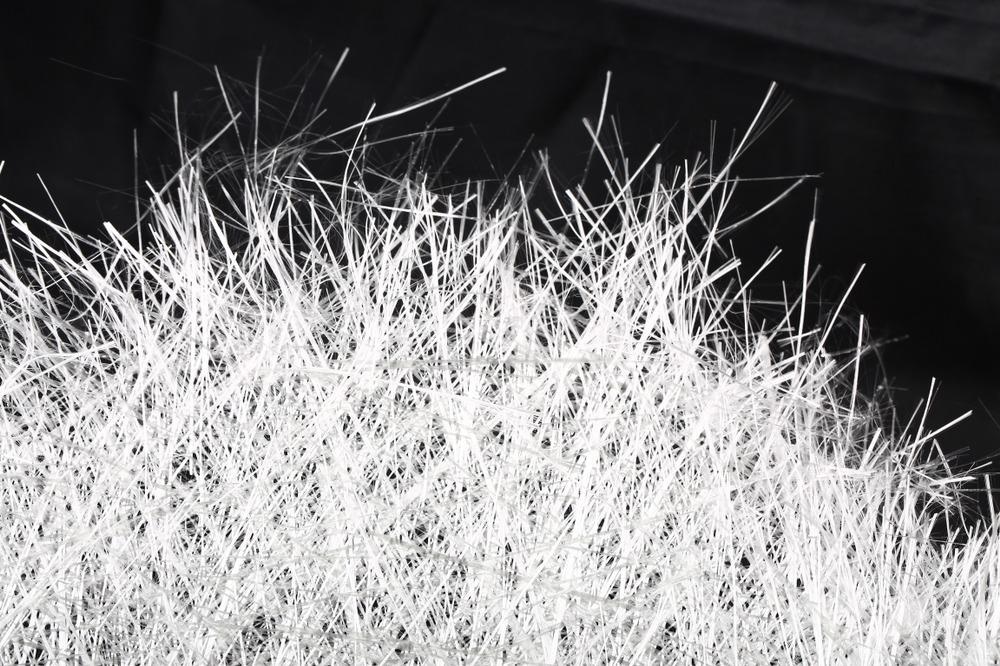Non-crimp fabrics like METYX’s glass fiber fabric range are becoming increasingly sought after in the advanced manufacturing industry, with applications in many sectors.

Image Credit: Pixparts/Shutterstock.com
METYX Composites, a manufacturer of high-performance technical textiles based in Manisa, Turkey, recently gained accreditation for its multiaxial glass fiber fabric products to be used in drinking water pipes.
METYX, a subsidiary of Turkish corporate Telateks, says its multiaxial glass fiber fabric products are now approved for use in unsaturated polyester, vinyl ester, and epoxy resin glass fiber reinforced (GRP) drinking water pipes, as well as GRP potable water storage systems.
GRP is already well established in water, drainage, and sewage pipe manufacturing, and the new accreditation announced by METYX will add new applications for the cutting-edge material.
Multiaxial glass fiber fabrics are a type of non-crimp fabric (NCF). The new applications for glass fiber fabric developed by METYX are part of a wave of new applications for NCFs and other NCF-based materials.
Non-Crimp Fabrics
NCFs include one or more layers of long fibers facing set directions. The fibers are held in place with a secondary non-structural thread.
The fibers can be made of a variety of materials, including polymers, carbon, and glass. The type of fiber material greatly affects the properties of the final NCF.
There are three different types of NFC, which are defined according to the arrangement and orientation of their constituent fibers.
More on Innovative Fabrics - Metafabrics: Smart Fibers Can Shield Vehicles from Heat as Climate Changes
In uniaxial NFCs, all of the fibers in the fabric are oriented in the same direction. Biaxial NFCs orient fibers in two directions. Multiaxial NFCs have their fibers oriented in three or more directions.
In biaxial and multiaxial NFCs, the angles at which fiber orientations cross one another impart various qualities to the final fabric, and are precisely engineered. The different bands of yarn in multiaxial NFCs are layered over one another, with different orientations touching.
These reinforcement weft yarn layers are fixed together with knitting yarns in a machine-driven warp-knitting process. This process enables manufacturers to fine-tune the angles that fiber bands make, ranging from approximately 20° to −20° against the direction of production.
Available production space generally limits how many layers thick an NCF can be, due to spatial limits on the maximum number of weft insertion systems in the facility. Machines capable of making especially thick NCFs need to be especially long to fit in enough weft insertion systems.
The Properties of NFCs
All types of NFCs display obvious mechanical stiffness, toughness, strength, and durability properties. They also offer a great deal of design flexibility.
Their main advantage is their strength. NFCs are stronger than metal sheets of comparable weight, while also being highly elastic. In composite applications, they require a minimal amount of resin compared to alternatives, while delivering the same amount of reinforcement strength.
NFC’s unbent threads display high fiber density, which results in 3D structures made up of 2D fabrics using modern fabrication technologies.
The structure of NCFs gives them excellent drape performance, as well as their aforementioned strength, elasticity, and fiber density.
Combined, these properties have driven much commercial interest in NCFs in the last few decades.
Commercial Applications for NCFs
NCFs are a valuable addition to the range of textiles that can be used as composite materials. NCFs are often used as semi-finished textile products in such applications.
Multiaxial NCFs are preferred for composite applications due to the straight orientation of their yarns and the fine-tuning possibility provided by changing band orientation angles.
Axial and off-axis reinforcement applications like wind turbine blades, boat hulls, storage tanks, trailer panels, and pultruded profiles like bridge decks all use NCF composite materials. Quasi-isotropic performance is required for heavy structural laminates for these applications, which is why many manufacturers turn to NCFs.
NCFs are also used in the automotive manufacturing sector. However, due to their cost, NCFs (and all composite approaches) are limited to the smaller luxury and performance segments of the market.
Interview - Robotic Textiles in Action: OmniFiber
Multiaxial NCFs have also seen use in aerospace industries. Here, as with turbine blades and ship hulls, the material’s great design flexibility makes it a sought-after reinforcement material for composite manufacturing.
METYX: Extending the Uses of NCFs with Glass Fiber Fabric Accreditation
METYX’s multiaxial glass NCF range was independently tested by the CARSO Group, France’s leading water analysis provider. The body certified the products for use with drinking water.
METYX manufactures high-performance technical textiles from factories around the world, including in the U.S. and its home country, Turkey. The company’s catalog includes multiaxial reinforcements, carbon reinforcements, RTM reinforcements, woven reinforcements, and vacuum bagging products.
The firm provides products for the marine, automotive, transportation, wind energy, construction, and architectural industries. Now, its NCFs will be used in infrastructure, construction, sports, and leisure to transport and store drinking water.
Bahattin Sendogan, a director of the company, said:
“The addition of this new drinking water pipe approval has extended the reinforcement product offering that METYX is now able to supply to both new customers and our existing GRP pipe producers using METYX’s multiaxial fabrics for their water, drain and sewage pipe needs."
References and Further Reading
“METYX Multiaxial glass fiber fabrics gain GRP drinking water pipe approval.” (2021) Metyx. Available at: https://www.metyx.com/metyx-multiaxial-glass-fiber-fabrics-gain-grp-drinking-water-pipe-approval/#more-3482.
“Non-Crimp Fabric.” Science Direct. Available at: https://www.sciencedirect.com/topics/engineering/non-crimp-fabric.
Disclaimer: The views expressed here are those of the author expressed in their private capacity and do not necessarily represent the views of AZoM.com Limited T/A AZoNetwork the owner and operator of this website. This disclaimer forms part of the Terms and conditions of use of this website.